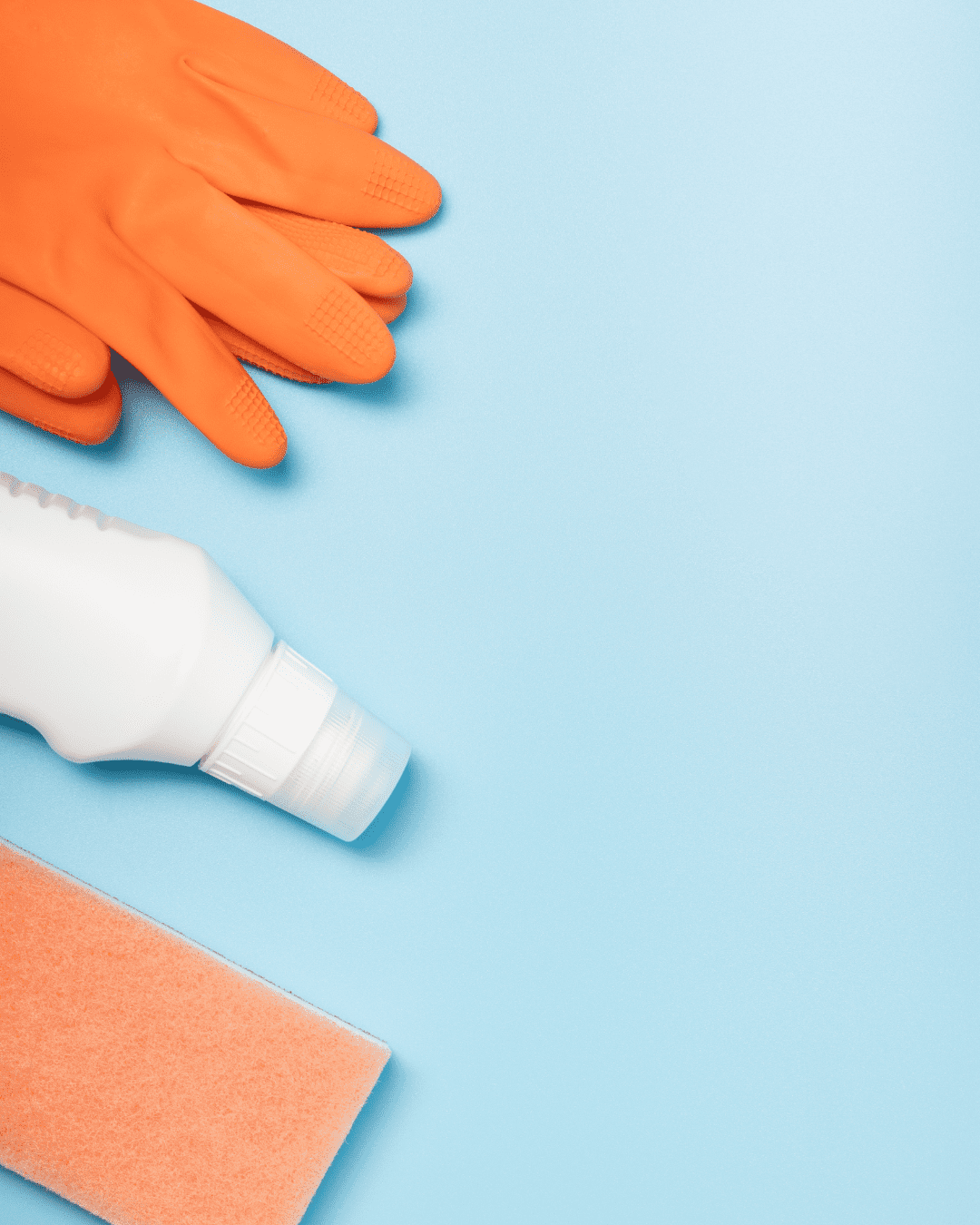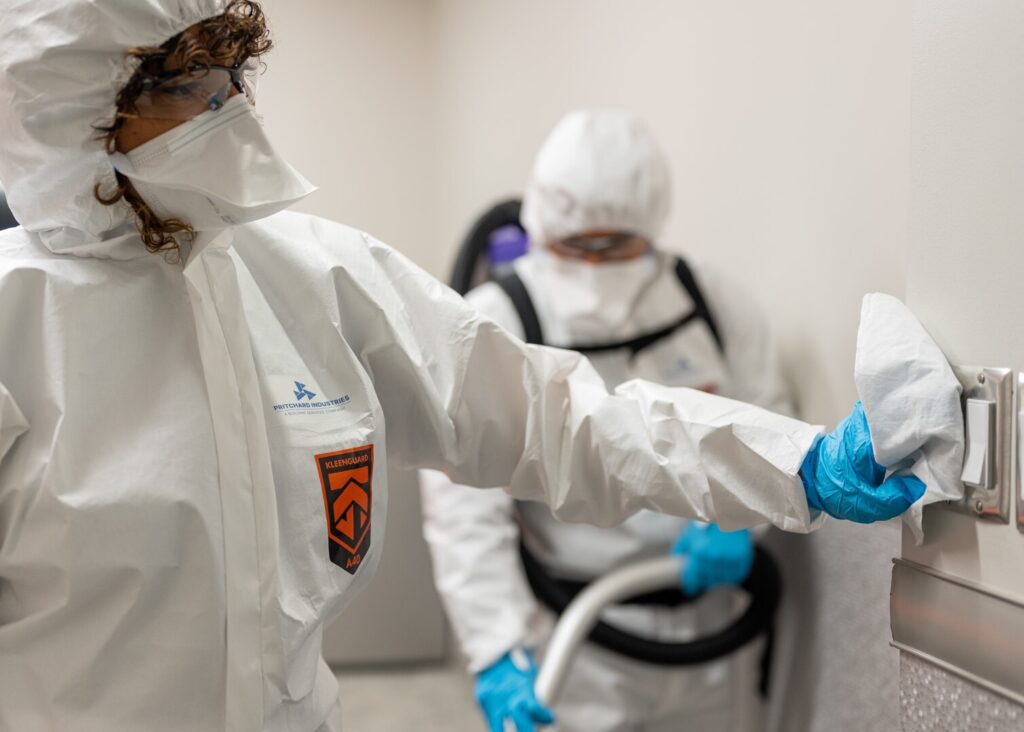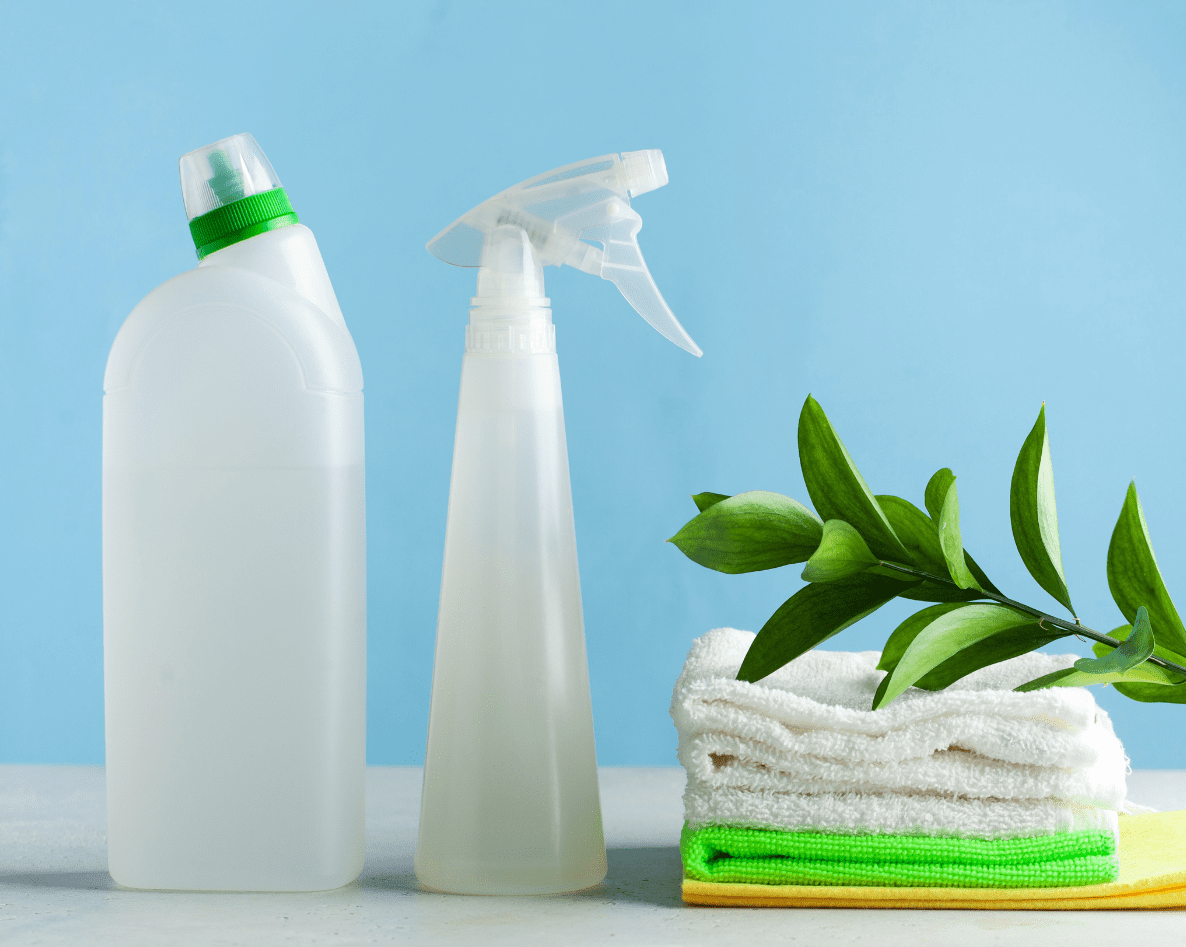What is an Antimicrobial Coating? The Complete Guide

Demand for Antimicrobial Coatings Is on the Rise
Global demand for antimicrobial coatings is growing at a rapid pace. By 2032, the market is projected to surge by 12.80%—driven by rising health standards, stricter safety regulations & a renewed focus on proactive facility protection.
From office campuses to hospitals, business leaders now understand that creating hygienic, sanitized environments is essential. A safe space protects customers, drives employee productivity, prevents reputational damage & reduces compliance risks. Antimicrobial coatings offer a cutting-edge solution.
What Are Antimicrobial Coatings?
Antimicrobial coatings are chemical agents that prevent the growth of microbes—including bacteria, viruses, mold & fungi—on treated surfaces. Unlike antibacterial coatings, which target only bacteria, antimicrobial coatings cover a broader range of threats.
These coatings elevate disinfection standards by offering a long-lasting layer of protection. Where traditional cleaning methods offer short-term relief, antimicrobial coatings provide a continuous defense, stopping harmful organisms before they spread.
Antimicrobial coatings are also ideal for high-touch surfaces, equipment & materials across virtually any industry—from healthcare & education to lab environments & public spaces. These coatings actively disrupt microbial cell function upon contact, neutralizing threats in real time.
Benefits of Antimicrobial Coating Technology
Enhanced Disinfection
Unlike standard cleaning, antimicrobial coatings actively reduce microbial activity. The result is a safer, more hygienic environment where pathogens are less likely to spread.
Long-Lasting Protection
These coatings deliver extended surface protection, working around the clock even between cleaning cycles. Instead of reacting to contamination, they prevent it from the start.
Surface Durability
Microbes accelerate wear & tear. Antimicrobial coatings help preserve the structural integrity of key surfaces—preventing deterioration & extending longevity.
Reduced Disease Transmission
By stopping microbes from multiplying, coatings certainly reduce the risk of disease transmission. From clinics to offices, this protection supports employee well-being & customer safety.
Versatile application
Suitable for a wide range of surfaces & environments, antimicrobial coatings can be customized for each industry, material type & compliance need.
Common Active Ingredients in Antimicrobial Coatings
Coating formulations vary based on their active agents. Each is selected for specific microbial threats, application use & surface compatibility.
- Silver ions: Known for durability & broad-spectrum protection against bacteria, fungi & viruses. Therefore, these are often used on high-contact surfaces in healthcare & textile applications.
- Copper compounds: Disrupt microbial membranes for ongoing protection. Used in clinical settings, but may tarnish or corrode over time.
- Quaternary Ammonium Compounds (QACs): Popular in public spaces for their versatility. These compounds penetrate microbial membranes, though some resistance may occur with overuse.
- Triclosan: Longstanding antimicrobial agent used in personal care products. Effective against lipid-based microbes but may raise environmental concerns.
- Zinc Pyrithione: Offers strong protection in outdoor settings prone to algae or fungi. Highly stable but must be used with care due to potential toxicity at higher concentrations.
Where Antimicrobial Coatings Work Best
While any environment can benefit from ongoing protection, certain industries gain the greatest value:
Healthcare: Surfaces in hospitals, clinics & labs are high-risk zones for pathogen spread. Antimicrobial coatings help break the infection cycle & support compliance with infection prevention protocols.
Food Production: In food processing facilities, hygiene is non-negotiable. Coatings help ensure food safety by preventing microbial contamination on equipment, surfaces & packaging.
Public Spaces: Airports, stadiums & transit hubs require constant cleanliness. Antimicrobial protection on handrails, seating & kiosks helps keep the public safe in high-traffic environments.
How Antimicrobial Coatings Are Applied
Professional application ensures maximum effectiveness. The process includes:
- Surface preparation: Surfaces must be fully cleaned & dried before coating. This allows for proper adhesion & performance.
- Coating selection: The best formula most certainly depends on the surface type, microbial threats, use case & duration of protection needed.
- Proper application: Technicians apply coatings according to manufacturer guidelines for even coverage & adherence to safety protocols.
- Curing & drying: The coating must remain undisturbed while drying to maintain integrity.
- Final inspection: Once cured, the surface is evaluated for complete coverage & performance assurance.
Professional Disinfection Services
The power of antimicrobial protection otherwise lies in its application. Improper installation weakens the coating's effectiveness & shortens its lifecycle. That is why expert execution is essential.
Likewise, with advanced training, innovative solutions & a deep understanding of microbial threats, disinfection specialists ensure every coating delivers optimal protection. When an experienced team analyzes your environment, they will recommend the right product & execute with precision.
Antimicrobial coating is a smart investment in your organization's health strategy. Whether your goal is compliance, customer protection, brand reputation—or all three—this added layer of defense can make a measurable impact.

Ready to Protect Your Surfaces?
Local disinfection teams are ready to implement long-term solutions with real-time benefits. From medical facilities to public venues, choose antimicrobial coatings tailored to your facility needs.
Contact us today to explore the next level of clean & follow on LinkedIn for the latest updates.

